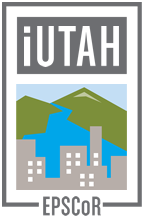2015 Research Catalyst Grantee

Steven Emerman
Utah Valley University
Project Title
A geochemical and sociological study of backyard wells and gardens in Utah Valley: implications for the future of water sustainability in Utah
Abstract
Ferreira (2013) documented elevated concentrations of As and heavy metals in the rivers that flow westward across the Wasatch Range and heavily-populated Utah Valley. In Utah Valley it is not uncommon for urban residents to dig and maintain shallow wells in their backyards, which is unusual in urban areas outside of developing countries. Since the rivers in Utah Valley are losing streams, the question arose as to the levels of As and heavy metals that might be found in these shallow wells. This question was addressed under an iUTAH Research Catalyst Grant in the summer of 2013, which found that, out of 100 water samples from backyard wells in Utah Valley, 40% exceeded EPA drinking water regulations for As, Cd and Pb. A strong negative correlation between As and Ti suggested that Ti oxide has a role in the subsurface sequestration of As, a factor that was not explored in previous studies of shallow, hand-dug wells in the Himalaya. Although student researchers asked questions only about wells and not about people, common themes shared by well owners were that the wells were dug and maintained in anticipation of an apocalypse, but that, in the meantime, the wells were used for watering gardens, livestock and lawns.
The objectives of this proposal are to address the following questions:
- Will a larger set of water samples alter current preliminary conclusions regarding the water quality of backyard wells, the mechanism of subsurface sequestration of As, or the pathways of shallow groundwater flow in Utah Valley?
- What are the levels of As and heavy metals in gardens watered by backyard wells?
- Why do residents of Utah Valley dig and maintain shallow wells in their backyards?
- How common are backyard wells in Utah Valley?
- What are the implications of backyard wells for the future of water sustainability in Utah?
The follow-up study will involve collection and analysis of water samples from another 400 backyard wells, increasing the total database to 500 wells. Plant samples will also be collected and analyzed from 50 backyard gardens that are watered by backyard wells with a focus on the four most common garden produce in Utah Valley. Surveys will be carried out with 100 owners of backyard wells that will address the following types of questions:
- Why was the well dug and why is it being maintained?
- How is the water currently being used and under what circumstances will the water be used for drinking or cooking?
- Are the well owners aware that wells require a permit?
- What are the attitudes of the well owners with regard to (a) municipal, state and federal governments (b) religious beliefs (c) church officials (d) regulation of firearms (e) wildlife (f) societal roles of women, gays and minorities?
Correlations among backyard well ownership and social attitudes will be combined with the spatial distribution of located backyard wells in order to estimate the number and distribution of the backyard wells that were not located by this study. Owners of backyard wells will be provided with data and information that will help them make informed decisions about their present and future use of their wells. Consideration will be given as to how Utah Valley residents who understand water sustainability in terms of digging a well in the backyard can be brought into the public conversation on water sustainability in Utah.
Collaborators
Eddy Cadet, Utah Valley University
Alexander Simon, Utah Valley University


